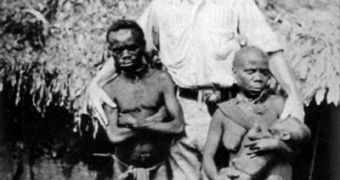A new scientific study, covering a span of 115 years, has determined that the height levels of three distinct pygmy populations rose and fell in direct correlation with death rates. The controversial conclusion, which appears in the October issue of the top scientific journal Current Anthropology, shows that, as death becomes more present in a population, that group of people drops in height, suggesting a direct correlation. Needless to say, the conclusions of this study were unexpected.
“We provide the first evidence that pygmy body sizes vary considerably over time, that they correlate strongly with mortality rates and that increasing mortality rates lead to even greater reductions of body size,” scientist Jay Stock, from the University of Cambridge in England, explains, quoted by Wired. The work was conducted together with fellow UC anthropologist Andrea Migliano. The two researchers say that the findings they made seem to suggest that higher mortality rates make women in these groups have children at a much younger age than they would otherwise.
These individuals' defining trait, their reduced height, may have remained a trait that was passed on from a generation to the next. The anthropologists believe that, if babies are born earlier, a lot of their bodies' resources are diverted away from the growing process, to fulfill other tasks for the organism. Other researchers believe that being small may have become a defining trait based on environmental factors, such as nutritional deficiencies or cramped forest quarters. Pygmy groups currently live in Africa, Indonesia, the Philippines and the Andaman Islands, Southeast of Burma.
They are defined by a height of no more than five feet, one inch (155 centimeters) for the average male. Information from 11 British government and anthropological studies, which were conducted between 1871 and 1986, was taken into account as the researchers reached their conclusions. Some 604 individuals from three distinct pygmy groups, the Great Andamanese, the Onge and the Jarawa, were included in the investigations, which were conducted in the Andaman Islands.
“Longitudinal studies of pygmies and other short-statured people, with detailed nutritional and health information, are the only way to study this issue,” Loughborough University anthropologist Barry Bogin, who has not been part of the new research, says.

 14 DAY TRIAL //
14 DAY TRIAL //